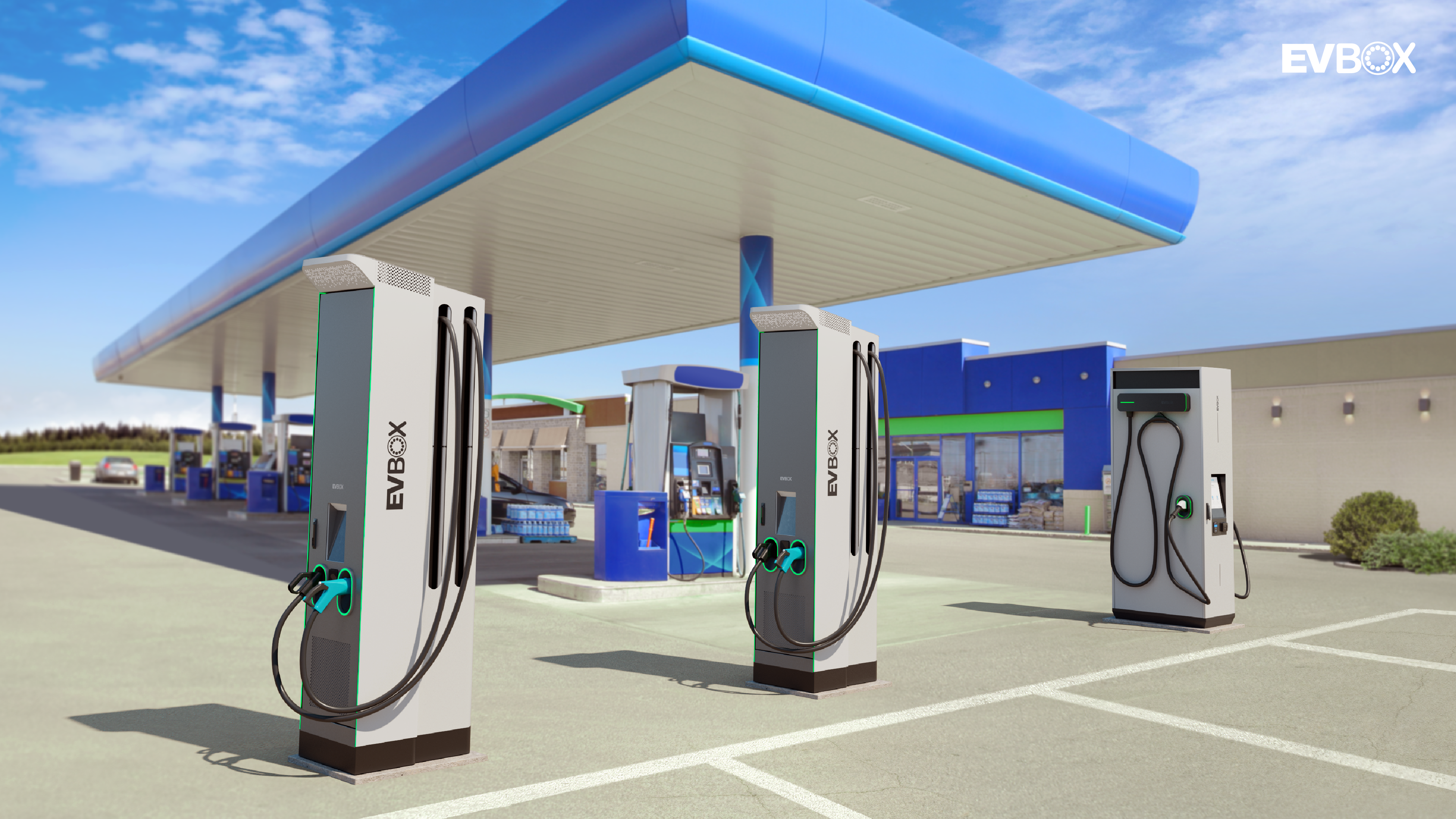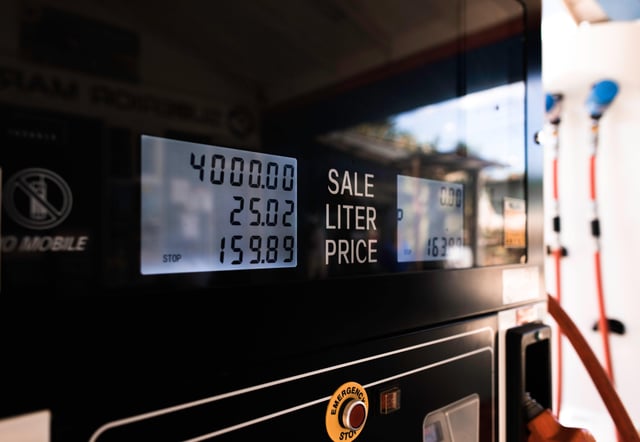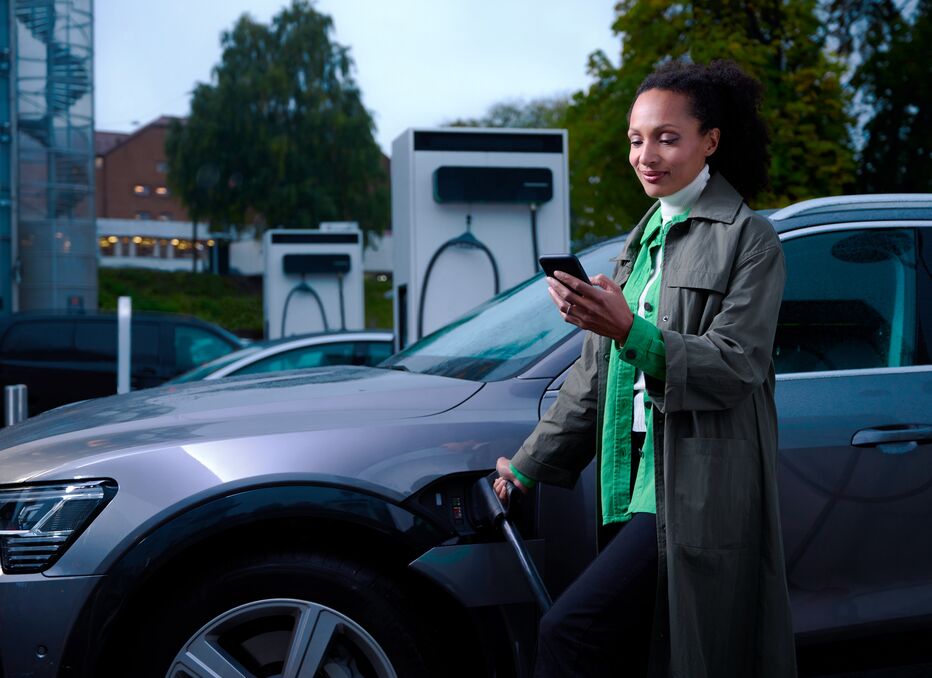
How the fuel retail industry can benefit from electric fleet vehicles
All over the world, sustainability has become a larger focus for all types of businesses. As a result, many organizations are looking for ways to reduce their impact. One key consequence of this trend is the transition away from internal combustion engine (ICE) vehicles towards electric vehicles (EV).
By now it’s clear that the EV market is booming. Beyond passenger cars, many businesses are electrifying their commercial fleets, including light commercial vehicles and heavy-duty trucks.
As the way we fill up our vehicles changes fundamentally, fuel retailers find themselves in the middle of this transition. Indeed, many are already investing to tap into the growing EV charging market and attract new customers.
And why shouldn’t they?
Over the next decade, the EV charging value pool is expected to grow to $20 billion and more recently, BP stated that EV charging is already on the brink of becoming more profitable than filling up cars with gasoline.

While margins on gas tighten, EV charging proves to be an attractive opportunity for fuel retailers to diversify their offerings and future-proof their business. Thanks to their existing infrastructure and location along major transport routes, gas stations are ideally positioned to attract and benefit from not only passenger EV charging, but also commercial fleets.
Decarbonization of road vehicles
As the fight to prevent a climate crisis intensifies, governments around the world are looking to cut carbon emissions, with the transport and heavy-duty distribution sector being a key focus. To achieve carbon neutrality by 2050, the EU’s Fit for 55 package emphasizes EV charging infrastructure buildout, calling for charging points every 60 km along major European highways and a new structure for transportation fuel tax rates that will tax the most polluting fuels the highest.

Over the Atlantic, the United States has allocated $5 billion to cover the US highway network with electric car chargers. The UK’s energy regulator, in the meantime, has approved a £300 million investment to triple the number of ultra-fast electric charging points across the country.
The number of EVs on the road is projected to rise exponentially, the development of charging infrastructure represents a key focus for governments, and a profitable opportunity for fuel retailers to diversify their offerings.
Moving differently in a post-pandemic world
The transport sector has been further impacted by the COVID-19 pandemic, which has transformed the way we work, move, and shop. While lockdowns aren’t eternal, working from home looks to be a lasting trend, and many companies have already committed to a blended working style post-pandemic. While the EV and charging infrastructure segments are undoubtedly growing, fewer people commuting to work could mean lower utilization of public chargers, especially as most daily commutes are short enough to complete with home charging.
So, while investment in charging stations might feel uncertain and expensive for many fuel retailers, EV charging is, in reality, a profitable opportunity, and in more ways than one. Sure, charging stations can attract high-income customers that can take advantage of a gas station’s services during a charging break and fuel retailers can benefit from electricity prices’ relative stability compared to the fluctuating gas prices. However, it’s the commercial fleets shifting to electric mobility who offer an even more lucrative opportunity, as your business can meet their mid-route charging needs.

As consumers continue to shop online post-pandemic and delivery fleets switch to EVs to reduce emissions, the demand for charging commercial fleets will only continue to increase in the coming years. Indeed, the dramatic growth of online shopping fuels a considerable demand for logistics and deliveries. While some of these delivery companies will suffice by investing in charging stations to rely on overnight charging, many will also need to look into mid-route charging strategies for certain routes or use cases. Some might even be fully dependent on mid-route charging and will want to avoid investing in EV charging stations themselves if there is sufficient fast-charging infrastructure available.
The shift towards electric mobility goes beyond passenger vehicles
While passenger cars are often the first thought when it comes to electrification, commercial vehicles actually represent a significant portion of the emissions from transport. As governments and businesses seek to achieve carbon neutrality, electric vehicles are already being deployed in commercial transport.

Commercial vehicles can be broken down into light commercial vehicles and trucks and heavy-duty vehicles. Globally, the International Energy Agency estimates that the number of light commercial electric vehicles will increase from about 10 million in 2020 to around 50 million in 2025 and almost 140 million vehicles in 2030. Electric trucks and heavy-duty distribution vehicles are projected to increase to 1.8 million in 2030, up from a negligible level in 2020.
Last-mile delivery and heavy-duty distribution
Currently, light commercial vehicles represent the biggest opportunity for electrification. Specifically, short-haul and last-mile delivery vehicles are particularly well-suited for EVs, given their relatively short distances that can be covered with few or no charging stops.
Big logistics companies have noticed this opportunity and are aggressively electrifying their fleet. Amazon and UPS, for example, have ordered 100,000 and 10,000 electric delivery vehicles respectively. DHL and FedEx are also electrifying their fleets to reach carbon neutrality, while IKEA has committed to making all home deliveries zero-emission by 2025. Looking ahead, it won’t be long before many more brands adjust to an electric future.

As the stock of electric delivery vehicles increases, the demand for charging and charging infrastructure will grow exponentially. While many fleets will charge overnight, a significant proportion is likely to rely on mid-route charging, using public charging infrastructure. Beyond extending the service range of delivery vehicles, this solution is also attractive for fleets with limited space to install chargers at their depot and allows for the use of cheaper vehicles with smaller batteries.
How can fuel retailers benefit from electric fleet vehicles?
Currently, there is a major gap in countries’ charging infrastructure. Even where chargers are available, they may be unreliable, too slow, or poorly positioned to meet commercial fleets’ needs. Fuel retailers are perfectly positioned to fill this gap in the market by leveraging their locations and existing infrastructure to install chargers, specifically, Level 3 chargers (often called DC or fast charging stations).
Offer DC fast charging stations
A Level 3 charger is the fastest type of EV charger and can, depending on its power output, charge an electric vehicle in minutes instead of the hours required by Level 1 and Level 2 chargers. As such, it is ideal for short stops along highways or at gas stations for commercial fleets needing to top up.

Increase gas station sales
Beyond revenue from charging, fuel retailers can benefit from EV chargers by upselling their other services, such as food or beverage offerings and convenience shops, to drivers while their vehicle charges. Given the higher margin on these compared to gas, combined with electricity prices’ relative stability, EV chargers may actually increase fuel retailers’ profitability in the long run.
Use government incentives to lower EV charging investment costs
Installing EV chargers comes with a number of additional benefits for fuel retailers. For example, gas stations gain visibility by appearing on EV charging maps, attracting electric car drivers who might otherwise bypass them. Given the central place EVs play in government policy, they offer many incentives for building EV charging infrastructure, such as one-off subsidies or tax exemptions, which gas stations can leverage.
Become part of mid-route charging strategies
Fuel retailers can also beat the competition by partnering with specific logistics or delivery companies to offer their fleets discounted charging rates. For companies operating within a fixed area, this can be highly attractive, as it saves them the installation costs for chargers. Fuel retailers, on their end, gain a predictable revenue source from the partnership, increasing the return on investment.
Fuel retailers can support the transition to EVs
As the transportation sector shifts away from ICE and towards electric vehicles, there is an urgent need to build out the charging infrastructure to support this transition.
Fuel retailers are in a privileged position to leverage this trend, building on their existing infrastructure and strategic location around major roadways.
As commercial fleets transition to EVs, serving their need for mid-route charging is an attractive opportunity for fuel retailers to hedge risk and ensure consistent, long-term revenue.
Learn more about EV charging for fuel retailers
Whilst commercial fleets may be an essential (and valuable) part of a fuel retailer’s EV charging strategy, private passenger vehicles will still make up the lion’s share of the global EV fleet. For private EV drivers who require on-the-go charging options, providing fast charging solutions (DC charging) is essential. Take a look at our extensive EV charging guide for fuel retailers to find out why.
Related articles

How the fuel retail industry can benefit from electric fleet vehicles
All over the world, sustainability has become a larger focus for all types of businesses. As a result, many...

Alternative fuels and the future of gas stations [2023 update]
Last updated 29th September, 2023 As societies around the world seek to decarbonize their economies and move away from...

Why converting your gas station to an EV charging business will attract more customers
Last updated on August 29, 2023 Despite their name, modern gas stations offer a lot more than just a pump for drivers...
